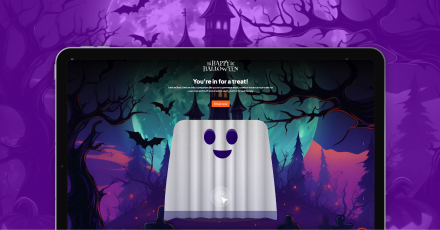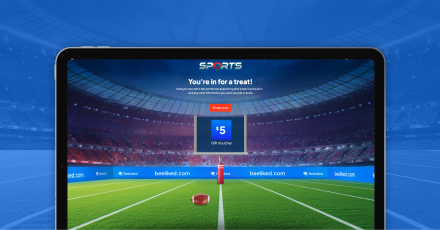In this post, we’re sharing our wisdom on how job satisfaction impacts employee performance. We also discuss how improving it through interactive solutions like BeeLiked’s gamified solutions for employee engagement can lead to greater business success.
Decades of research have linked job satisfaction to everything from employee engagement to productivity, well-being, and employee turnover. A recent study by CRM leader Salesforce found that employees who feel heard in the workplace are over four-and-a-half times more likely to feel empowered to do their best work than those who don’t.
The quarterly Randstad Workmonitor study, which covers 34 job markets around the globe, found in 2019 that countries like the U.S., U.K., Germany, and France have some of the highest job satisfaction.
One of the most studied work fields, job satisfaction, is seen as a dynamic process and a reliable indicator for things like employee engagement. We know engaged employees equal better job performance. Organizations looking to improve employee performance can be well-served by finding ways to boost job satisfaction.

How Do We Measure Job Satisfaction?
The biggest challenge with measuring employee job satisfaction is that each organization is different. The causes of job satisfaction, too, vary from worker to worker, even within the same workplace. We know that across the board, most employees say job satisfaction has less to do with financial incentives and rewards and more to do with respect, recognition, and growth opportunities.
Most businesses use similar tools to measure employee satisfaction:
- Employee satisfaction surveys are by far the most popular. They’re one of the best methods for measuring expectations, stress levels, coworker relationships, and career progression. Questions like “Do you feel adequately rewarded for your work commitment?” “Does management provide you with the support you need?” and “Are you happy with available growth opportunities?” give employers a good mix of qualitative and quantitative data.
- The ESI, or Employee Satisfaction Index, provides statistics and insights on how employees perceive an organization. Backed by science, the ESI has employees rate on a scale of one to 10 three criteria that help gauge employee satisfaction: how satisfied an employee is with the workplace, how well the workplace meets the employee’s expectations, and how close in the workplace to the employee’s ideal job?
- The eNPS or Employee Net Promoter Score uses one simple question to show how employees feel about their company: On a scale of zero to 10, how likely are you to recommend our company as a place to work? Employees are divided into promoters, who respond with a nine or 10, passives, who give a rating of seven or eight, and detractors, who respond with a number between zero and six. If the number of detractors is higher than the number of promoters, it’s a warning sign you need to work on employee satisfaction.
Other methods used include one-on-one interviews, suggestion boxes, and customized software.

Why is Job Satisfaction Important?
When job satisfaction factors fall into place, the workplace becomes more enjoyable. That translates to happier employees who reward their employer with the following:
- Improved productivity, no matter the job title and pay grade.
- Lower employee turnover, thereby reducing one of the highest employee costs.
- Increased loyalty motivates employees to buy into the organization’s mission and goals.
- Greater profits as employees who are satisfied tend to contribute to higher sales, lower costs, and a more robust bottom line.
It doesn’t take extraordinary effort to keep employees happy and satisfied. It simply means finding ways to show them the respect and trust they crave can help build a stronger, more stable, and profitable future for your organization.
Does Job Satisfaction Affect Job Performance?
The short answer is yes, it does. But it doesn’t always guarantee it. The relationship between job satisfaction and job performance would appear obvious. Yet many organizations still fail to ensure their employees are satisfied. Instead, they focus on traditional rules and reinforcements that ensure “success.” Workplace structure is not bad, but when it doesn’t encourage workplace happiness and individual employee satisfaction, much sought-after success rarely appears.

What Makes Employees Happy?
As any business knows, giving regular raises is an expensive way to retain employees. That’s not to say, of course, those salary increases aren’t often warranted. But while money can put a smile on any employee’s face, it’s not the only way to keep them satisfied. Things like prioritizing a work-life balance, making employees a part of the big picture, being transparent and honest, encouraging open communication, and creating a career pathway are all good ways to promote a positive workplace attitude.
How Do You Ensure Employee Satisfaction?
Before you can improve employee engagement and satisfaction, you need to know what to improve and then develop the right programs and practices. The simplest way to find out what will satisfy your employees is to ask them. Still, these six factors consistently appear in employee satisfaction surveys.
- Ask individual employees to define their personal motivations. This can be done one-to-one or in team meetings where everyone openly discusses the issues they face in their jobs. This is when surveys also come in handy.
- Dial back on excessive control. Reduced micromanagement makes employees feel trusted. They’re motivated to work harder to retain this trust.
- Improve the work environment with even small things like plants, ergonomic seating, or a new coffee machine. These relatively little things can have a huge impact on satisfaction and happiness.
- Everyone wants to be heard. Improve communication across all levels by ensuring employees feel safe and secure to be critical when necessary. Employees who feel they can’t speak out about concerns will internalize negative feelings, leading to dissatisfaction on the job.
- Flexible deadlines, whenever possible, go a long way in reducing stress. When there are hard deadlines, be sure to schedule projects further in advance or find ways to free up employee time from other tasks so they can get the work done on time.
- Create an employee reward and recognition program. Mark Twain once said, “I can live for two months on a good compliment.” Recognition and rewards are powerful tools for building employee morale, motivation, and satisfaction. From a simple “thank you” to more creative rewards, smaller and more consistent gestures are much more effective than once-a-year formal acknowledgments.
When it comes to rewards and recognition, it’s important to remember each employee has unique skill sets that should be recognized on their own merits. Other times you want to recognize team performance. That’s where solutions like gamification can be the key to a more satisfied workforce.

Gamification increases employee satisfaction by:
- Making work more interesting by incorporating fun challenges and tasks.
- Triggering employee motivation to do more to earn rewards and recognition.
- Psychologically influencing employees to push themselves to achieve higher goals.
Gamification also helps employees learn more speedily and easily. This is particularly useful for new hires who need to quickly understand their role and responsibilities in the organization. One of the most popular employee engagement techniques with Millennials, gamification delivers the instant rewards and recognition this generation thrives on.
The bottom line? As it gives meaning to employee tasks, gamification helps organizations bring a healthy, profitable transformation to their business. And the good news is that implementing gamification in the workplace is relatively simple once you start seeing things from a gaming perspective.
Read our guide: What is Gamification? A Beginner’s Guide
Give Employees Reward Opportunities
Employers who focus on improving employee satisfaction through interactive solutions like gamification can see increased employee performance, productivity, and engagement. Profits, too, increase as happier employees make for happier customers.
About BeeLiked
BeeLiked creates customizable gamification solutions that empower employees while recognizing them for the qualities, behaviors, and values you want to see in the workplace. When you integrate entertaining games such as BeeLiked’s Cryptic Image Quiz, Spin the Wheel, and Multi-Media Contests into your employee recognition program, you’ll enjoy greater employee engagement and help employees feel more valued and connected. Watch this video to learn more about all the benefits our gamified campaigns can deliver to your organization.



















